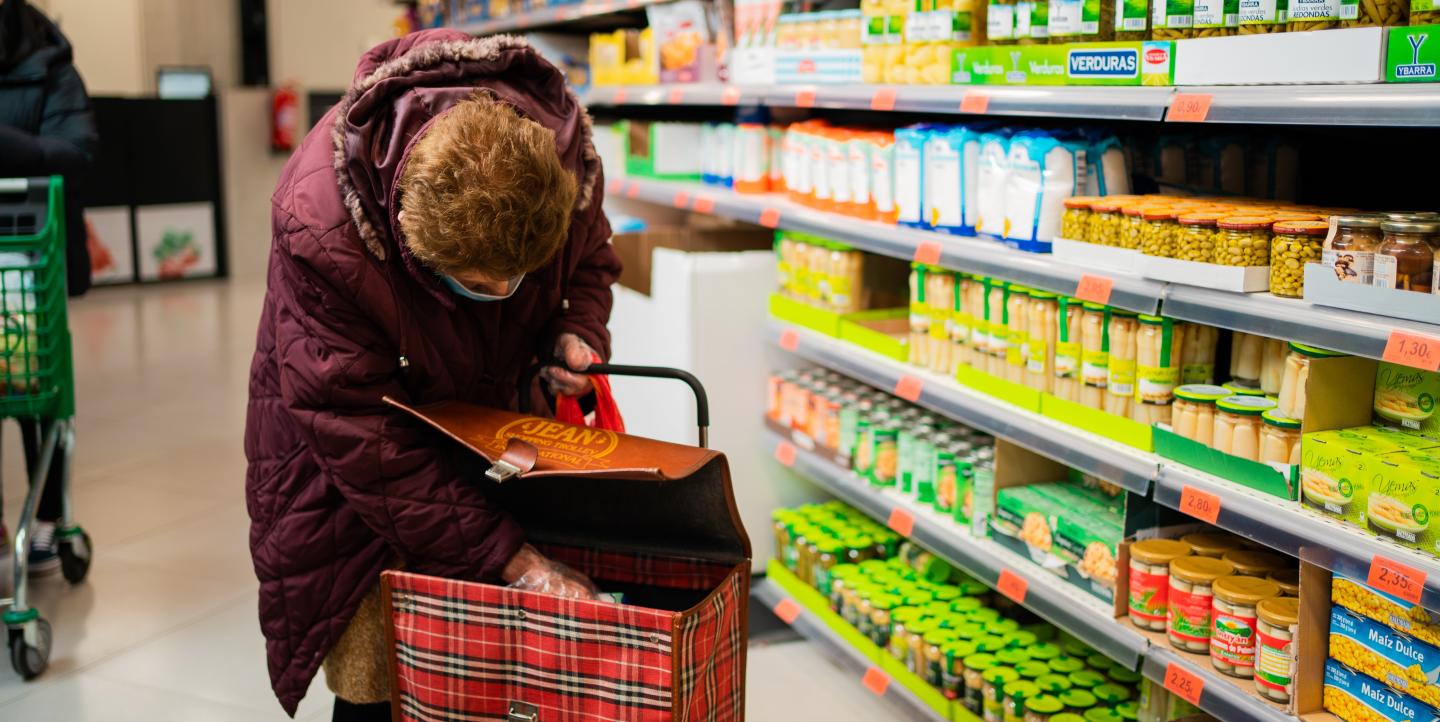This is the third part on a three-part series covering key findings from "From Outrage to Opportunity: How to Include the Missing Perspectives of Women of All Colors in News Leadership and Coverage." You can find the first article in the series here and the second here.
A year ago, Dee* lived a modest but financially secure life in London. A childcare worker and housekeeper, she and her husband could save a couple of hundred pounds a month and occasionally financially help their adult daughter, a single mother of three. But in the last few months, the rising price of food and energy has led to worries about Dee’s ability to cover her household costs. She’s recently had to take up two side hustles and to ramp up the support for her daughter, who is constrained from full-time work by a lack of affordable childcare.
“It’s a real struggle. Before we would go out. Now we’re having to cut back, to work harder and we barely see each other anymore. Yesterday my daughter called me to tell me she’s had to use a food bank,” said Dee tearfully. Dee’s story - underpinned by a few structural gaps that women face – is rarely covered in the news.
In a prior article, I reported that less than 1 in 5,000 news stories globally between 2017 and April 2022 featured any reference to seven prominent gender gaps, which my consultancy AKAS tracks. These missing lenses, analyzed in detail in my latest report From Outrage to Opportunity, profoundly impact who is absent from the news and policy-making focus when it comes to the big current stories, such as the cost of living crisis.
As the cost of living crisis remains an important ongoing story, here are three things to consider to highlight the perspectives of women most impacted.
Women are disproportionately impacted by the cost of living crisis.
Universally, women are more concerned than men about the negative impact of the cost of living crisis. Research in countries from both the Global North and South draws a consistent picture. For example, in the U.S., women are consistently more concerned about the country's economy, with 72% of women vs. 64% of men describing its state as fair or poor. Other survey results from the U.S. have unearthed that women are forced to trade off their health when making difficult spending choices, such as by delaying dental care and medical treatments, and 86% reported staying awake at night worrying about food costs. This also applies to the Global South, where a vast majority of women in Kenya (80%), South Africa (81%) and Nigeria (84%) are concerned about rising prices -- slightly more so than men, whose concern has ranged between 74% and 77%.
In the U.K., the majority of women (56%) are concerned that the cost of living situation will impact their mental health, in comparison with 48% of men. Furthermore, they are more likely than men to believe that the current crisis will increase the demand on mental health services (85% vs. 79%). “I worry a lot,” confessed Dee. “The only way I manage to keep the shopping costs manageable is by doing additional work and a weekly meal planner, which I never did before.”
The structural bind that makes women’s current economic situation more challenging
Pay and power gaps between men and women exacerbate substantially the challenges that women face in the cost of living crisis. The World Economic Forum’s 2022 Global Gender Gap Report projected that it would take 132 years to close the economic participation and opportunity gap between men and women across 146 countries, including the pay gap. Our research also exposed the devastating trajectory of some countries, like Nigeria, where gender pay parity may never be achieved.
The pay gap is only one dimension of the wealth gender gap, which also incorporates the gulf between men and women in accumulated income, pensions, property and business ownership and investments. All these gaps widen with age, creating the ageism gap, in which disparities grow with age as men grow wealthier compared to women. Despite not being cited as an issue by almost all editorial leaders interviewed for our report, ageism particularly impacts women, intensifying gender inequity in multiple dimensions including participation in work, rates of pay, and the portrayal of women in media.
How the wealth, power and ageism gaps hit women disproportionately during the cost of living crisis should be a forensic lens for journalism, but instead, global coverage is dominated by men’s perspectives. In the last six years, men’s share of voice in articles featuring the term “cost of living” has outstripped that of women by a factor of three, as per AKAS’ analysis of data from the GDELT project. The ratio of men’s to women’s share of voices slightly worsened from 2.9:1 in 2021 to 3.0:1 in 2022.
Journalism should highlight the socio-cultural and structural barriers to economic equality
There is a significant cultural acceptance of the gender pay gap across researched countries by both men and women, which makes eradication or even reduction of the pay gap that much harder. In countries where attitudinal research is available, up to four in five women and men expect there to be a pay gap.
For instance, the majority of men and women in India and Nigeria, the majority of men in Kenya and South Africa, and almost half of women in South Africa said they agree with the statement that “it is natural for men to earn more than women, as they should be the main providers.” One in five women and one in four men in the U.S. also agree with the statement.
It is journalism’s role -- currently unfulfilled -- to highlight the social norms that support the existing pay advantage of men over women as a barrier to equality. To do so, journalists should pivot some story angles on women’s unique worries, needs and circumstances. In addition, journalists should explore the inherited structural barriers that result in men’s unfair economic advantage over women such as male-favoring social norms, childcare constraints, power and wealth gaps, all of which lead to adverse economic consequences.
Journalists should also seek to analyze datasets broken down by gender while seeking out experts, story protagonists and sources who are women of all colors and from under-represented communities. These sources include women like Dee, whose stories unveil a range of structural challenges that affect women and their families in a multitude of unfathomable ways.
*The name of the source has been changed to protect their identity
Photo by Victoriano Izquierdo on Unsplash.


